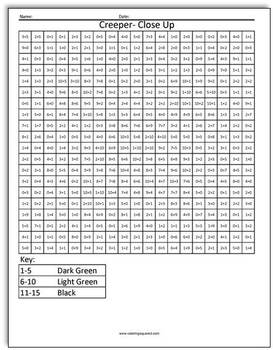

In chemistry, superscripted plus and minus signs are used to indicate an ion with a positive or negative charge of 1 (e.g., NH +Ĥ ). In physics, the use of plus and minus signs for different electrical charges was introduced by Georg Christoph Lichtenberg. In mathematics the one-sided limit x → a + means x approaches a from the right (i.e., right-sided limit), and x → a − means x approaches a from the left (i.e., left-sided limit). Positive and negative are sometimes abbreviated as +ve and −ve. In some occasions, this is extended to two plus or minus signs (e.g., A++ being two grades higher than A). For example, B− ("B minus") is one grade lower than B.

In grading systems (such as examination marks), the plus sign indicates a grade one level higher and the minus sign a grade lower. For example, subtracting −5 from 3 might be read as "positive three take away negative 5", and be shown as Some elementary teachers use raised plus and minus signs before numbers to show they are positive or negative numbers. Similar to the plus sign, the minus sign is also used in chemistry and physics. However, in some programming languages ( Microsoft Excel in particular), unary operators bind strongest, so in those cases −5^2 is 25, but 0−5^2 is −25. In mathematics and most programming languages, the rules for the order of operations mean that −5 2 is equal to −25: Exponentiation binds more strongly than the unary minus, which binds more strongly than multiplication or division. (Temperatures tend to follow the older usage −5° is generally called "minus five degrees".) Further, a few textbooks in the United States encourage − x to be read as "the opposite of x" or "the additive inverse of x"-to avoid giving the impression that − x is necessarily negative (since x itself may already be negative).

In American English nowadays, −5 (for example) is generally referred to as "negative five" though speakers born before 1950 often refer to it as "minus five". Īll three uses can be referred to as "minus" in everyday speech, though the binary operator is sometimes read as "take away". When it is important to distinguish them, a raised minus sign ¯ is sometimes used for negative constants, as in elementary education, the programming language APL, and some early graphing calculators. In many contexts, it does not matter whether the second or the third of these usages is intended: −5 is the same number. In this usage, ' −5' names a number the same way 'semicircle' names a geometric figure, with the caveat that 'semi' does not have a separate use as a function name. When it is placed immediately before an unsigned numeral, the combination names a negative number, the additive inverse of the positive number that the numeral would otherwise name. For example, if x = 3, then − x = −3, but if x = −3, then − x = +3.

The + sign is a simplification of the Latin: et (comparable to the evolution of the ampersand &). The symbols (P with overline, p̄, for più (more), i.e., plus, and M with overline, m̄, for meno (less), i.e., minus) appeared for the first time in Luca Pacioli's mathematics compendium, Summa de arithmetica, geometria, proportioni et proportionalità, first printed and published in Venice in 1494. In early 15th century Europe, the letters "P" and "M" were generally used. Nicole Oresme's manuscripts from the 14th century show what may be one of the earliest uses of + as a sign for plus. The Egyptian hieroglyphic sign for addition, for example, resembled a pair of legs walking in the direction in which the text was written ( Egyptian could be written either from right to left or left to right), with the reverse sign indicating subtraction: Though the signs now seem as familiar as the alphabet or the Hindu-Arabic numerals, they are not of great antiquity.


 0 kommentar(er)
0 kommentar(er)
